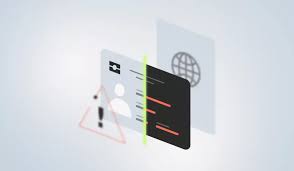virtual identification
Introduction: The Rise of Virtual Identification
In today’s fast-paced digital world, the demand for secure, efficient, and streamlined identity verification solutions is skyrocketing. As more services, transactions, and interactions move online, the need to ensure that users are who they claim to be becomes paramount. This shift has led to the rise of Virtual Identification (Virtual ID)—a cutting-edge solution that is revolutionizing digital security and convenience. Virtual identification enables individuals and organizations to verify and authenticate identities without the need for physical documents or in-person checks, making digital interactions safer and more efficient.
Virtual identification technologies are transforming industries such as banking, healthcare, e-commerce, and even government services. By leveraging advanced features like biometrics, artificial intelligence, and blockchain, these solutions offer a highly secure, tamper-proof method for identity management in a world that is increasingly reliant on digital transactions.
This article will explore the intricacies of virtual identification, its key product features, market dynamics, target audience, and why it is set to play a vital role in the future of digital transformation.
Chapter 1: What is Virtual Identification?
Virtual identification refers to the use of digital technologies to verify and authenticate an individual's identity in online and offline environments without relying on traditional physical documents like passports or driver’s licenses. It allows users to store and present their personal credentials in a secure digital format that can be used across various platforms, ensuring seamless interaction with organizations and businesses worldwide.
At its core, virtual identification involves the following key processes:
- Identity Verification: Virtual IDs validate personal information provided by users, cross-checking it against official databases and using technologies like biometric scanning (fingerprints, facial recognition, voice, etc.) to ensure authenticity.
- Authentication: Once verified, virtual identification can serve as an ongoing means of proving identity for secure transactions, log-ins, and access to sensitive information or systems.
- Data Encryption: Security is maintained using advanced encryption methods to protect user data, ensuring that virtual IDs cannot be easily forged or tampered with.
Virtual identification can take many forms, from mobile apps that generate secure digital credentials to blockchain-based identity platforms that allow users to manage and control their own identity data.
Chapter 2: Key Features of Virtual Identification Products
The success of virtual identification solutions lies in their advanced technological features, which offer robust security and convenience to users. Below are the primary features that distinguish leading virtual identification products:
Biometric Authentication
Biometrics play a critical role in virtual identification. By using unique physiological traits such as fingerprints, facial recognition, or even retinal scans, virtual IDs can guarantee that the person accessing the system is the legitimate user. These methods are much more secure than traditional passwords or PINs, which can be forgotten or hacked. Biometric authentication is fast, reliable, and nearly impossible to duplicate, making it a cornerstone of virtual ID systems.Blockchain-Based Security
Many virtual ID solutions leverage blockchain technology to provide decentralized, tamper-proof authentication. Blockchain’s distributed ledger ensures that identity records are immutable and transparent, significantly reducing the risks of fraud or data breaches. Users benefit from greater control over their personal data since they can decide who can access their identity credentials and for what purpose.Multi-Factor Authentication (MFA)
To further enhance security, virtual identification solutions often incorporate multi-factor authentication, combining several layers of verification. For example, users may be required to confirm their identity through a combination of biometrics, a one-time password sent to their mobile phone, and a personal security question. This makes it nearly impossible for unauthorized individuals to gain access, even if they somehow obtain one of the authentication factors.Cloud Integration
Virtual ID solutions are commonly integrated with cloud platforms, allowing for flexible, scalable, and accessible identity management. Cloud integration ensures that users can access their virtual IDs from any location and device, as long as they have the appropriate security credentials. Additionally, organizations can manage vast amounts of identity data efficiently in a secure, centralized cloud environment.Real-Time Data Verification
One of the most important features of virtual identification systems is real-time data verification. Whether it's for online transactions, accessing secure facilities, or verifying a customer’s identity for financial services, real-time verification ensures immediate and accurate results. This feature is especially critical for businesses that require fast decision-making processes, such as banks or e-commerce platforms.Compliance with Global Standards
Virtual identification solutions are designed to meet the growing list of regulatory and compliance standards around the world. From GDPR (General Data Protection Regulation) in Europe to KYC (Know Your Customer) and AML (Anti-Money Laundering) protocols, these systems ensure that organizations remain compliant with local and international laws when verifying customer identities and handling personal data.
Chapter 3: Market Analysis and Trends
The global market for virtual identification is booming, driven by several key factors. As digital transformation accelerates across industries, the need for secure, reliable, and efficient identification solutions has never been higher. Below are some market trends that highlight the growing demand for virtual identification technologies:
Digital Banking and Fintech
The rise of digital banking and financial technology (fintech) services has created a significant demand for virtual identification solutions. Banks and financial institutions are using these technologies to streamline KYC processes, enhance customer onboarding, and secure online transactions. Virtual IDs help reduce the risk of fraud and ensure compliance with regulatory requirements, making them indispensable in the financial sector.Healthcare and Telemedicine
In healthcare, virtual identification has become a critical tool for patient verification, particularly as telemedicine and digital health services gain popularity. Healthcare providers use virtual IDs to authenticate patients, protect sensitive medical records, and ensure secure access to telemedicine platforms. As healthcare services continue to shift online, the demand for secure and reliable identification solutions will only increase.E-commerce and Retail
As online shopping continues to grow, virtual identification is being adopted by e-commerce platforms to enhance security and streamline the checkout process. Virtual IDs can be used to verify customer identities, prevent fraudulent transactions, and ensure that payment credentials are valid. This not only improves the customer experience but also helps reduce operational risks for retailers.Government and Public Services
Governments around the world are embracing virtual identification solutions to offer digital public services. Virtual IDs are being used for everything from voter registration and tax filing to social security benefits and immigration services. By digitizing these processes, governments can improve efficiency, reduce paperwork, and offer more convenient services to citizens.The Rise of Decentralized Identity (DID)
One of the most exciting trends in the virtual identification space is the rise of decentralized identity (DID) systems. Unlike traditional identity management, which relies on centralized authorities (e.g., government databases), DID allows individuals to control their own identity data using blockchain technology. This shift towards self-sovereign identity is expected to revolutionize the way identities are managed, giving users greater privacy and security.
Chapter 4: Target Audience for Virtual Identification
Virtual identification solutions cater to a wide range of target audiences, from individual consumers to large enterprises and government organizations. The following segments represent the primary audiences for these products:
Businesses and Enterprises
Companies across industries are investing in virtual identification technologies to improve security and streamline operations. These solutions are particularly appealing to businesses in highly regulated industries, such as finance, healthcare, and telecommunications, where identity verification is critical. Enterprises benefit from reduced fraud, enhanced customer trust, and compliance with regulatory standards.Government Agencies
Governments are major adopters of virtual identification solutions. By implementing these technologies, public institutions can provide secure digital services to citizens, reduce administrative burdens, and combat identity theft. Virtual IDs also enable governments to modernize outdated processes, offering faster, more efficient access to services like welfare programs, tax systems, and legal documentation.Consumers
Consumers increasingly demand secure and convenient ways to manage their identities online. With rising concerns over data privacy and cybercrime, virtual identification offers individuals peace of mind when conducting online transactions or accessing sensitive services. From digital wallets to secure log-ins for social media and online banking, virtual IDs are becoming essential for everyday digital interactions.Financial Institutions and Fintech Companies
The financial industry has long been a target for identity fraud, making virtual identification crucial for securing transactions and preventing financial crime. Banks and fintech companies use virtual IDs to verify customer identities, simplify account opening procedures, and ensure compliance with KYC and AML regulations.Healthcare Providers
As telemedicine and digital health services become more prevalent, healthcare providers are adopting virtual identification to ensure secure patient authentication and protect sensitive health information. Virtual IDs help reduce the risk of identity theft, streamline patient registration processes, and improve access to medical services.
Chapter 5: The Benefits of Virtual Identification
Virtual identification offers numerous benefits to both organizations and individuals. These advantages go beyond just convenience, as they also address critical challenges in security, compliance, and user experience.
Enhanced Security
Virtual identification provides a higher level of security compared to traditional identification methods. With features like biometric authentication, multi-factor verification, and blockchain-based protection, these solutions ensure that users' identities are securely managed and protected from fraud or cyberattacks.Improved Efficiency
Virtual IDs streamline the verification process, eliminating the need for physical documentation and in-person authentication. This improves efficiency for businesses and consumers alike, reducing wait times and simplifying procedures for things like account creation, medical appointments, or government services.Global Accessibility
Virtual identification systems can be accessed from anywhere in the world, as long as users have an internet connection and the necessary credentials. This global accessibility is especially beneficial for businesses that operate internationally or for individuals who frequently travel or live in different countries.Cost Savings
Implementing virtual identification solutions can lead to significant cost savings for organizations. By automating identity verification processes and reducing the need for manual checks, businesses can cut down on administrative costs, reduce the risk of fraud, and enhance overall operational efficiency.
Conclusion: Virtual Identification as the Future of Digital Identity
As digital transformation continues to reshape industries and economies, virtual identification will become an indispensable tool for secure and convenient identity management. With its ability to enhance security, improve user experience, and streamline operations, virtual identification is poised to lead the way in creating a safer, more connected digital world.
Organizations and individuals alike stand to benefit from the adoption of virtual identification technologies, making it a crucial investment for the future. As more companies, governments, and consumers embrace these solutions, the virtual ID market is set to grow exponentially, solidifying its place as a cornerstone of modern digital identity.
 Custom ID services
Custom ID services
 Custom ID services
Custom ID services
 Educational technology trends
Educational technology trends
 Educational technology trends
Educational technology trends
 virtual identification
virtual identification
 virtual identification
virtual identification
 Fake ID online
Fake ID online
 Fake ID online
Fake ID online
